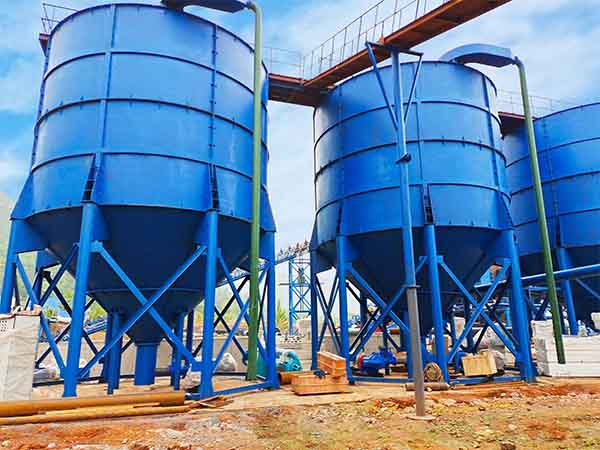Types of Sludge Thickener
Sludge thickeners are solid-liquid separation equipment based on gravity sedimentation, and there are different types according to different uses. The thickener can concentrate the slurry with a solids content of 10%-20% by gravity sedimentation into an underflow slurry with a solids content of 45%-55%. With the help of the slow-running rake installed in the thickener, the thickener underflow slurry is discharged from the underflow port at the bottom of the thickener.
Common sludge thickener
The common sludge thickener is a kind of thickening equipment that is widely used in beneficiation plants. This type of thickener is simple in structure, easy to manage, and reliable in production. However, due to its large diameter, it occupies a large area and its production capacity per unit area is also low. There are three main types of common thickeners according to the transmission modes, of which the first two are more common.
1. Center drive thickener
The diameter is small, generally within 24 meters.
2. Peripheral roller drive thickener
The more common large and medium-sized thickeners. The diameter is usually about 53 meters, and there are also 100 meters.
3. Peripheral rack drive thickener
The diameter is basically more than 53 meters, but it is used less now.
Deep cone thickener
The deep cone thickener is composed of a lower deep-cone tank and an upper cylindrical tank. The main feature is that the height of the conical thickening tank is greater than the diameter. Utilizing the natural pressure of the deep cone, large particles settle quickly, and a clearer overflow and a high concentration of underflow can be obtained. It has the advantages of a small footprint and large processing capacity. The particles clump and settle under the action of gravity and flocculants, and tightly combine to promote the escape of water. In order to maintain stable work, the deep cone thickener is equipped with automatic control and adjustment devices to control the amount of flocculant added, feed volume, and discharge volume. Through verification, the deep cone thickener is better than the rake thickener in terms of reducing the clarification area or increasing the underflow concentration.
Inclined plate thickener
The inclined plate thickener is installed in the upper part of the cylindrical tank along the circumferential direction with a number of inclined plates inclined to the center of the thickener with an angle of about 60° from the horizontal. These measures speed up the separation of ore particles, shorten the material settlement time, strengthen the separation and settlement process, increase the density release rate, and reduce infrastructure investment. Its production capacity can be increased by about 3 times. Because of its high efficiency, this type of thickener reduces the settling area, and is more suitable for thick dewatering of fine-grained concentrates and tailings. However, due to its complex structure, the inclined plate is easy to fall off, deform and age, and it is troublesome to maintain and operate.
High-efficiency thickener
The high-efficiency thickener has a special flocculant addition mechanism. In fact, the high-efficiency thickener is not just settling equipment, but a new type of dewatering equipment combined with mud filtration.
Related Products
There are no relevant articles.



